PSVR2 review - a VR enthusiast's dream
Sony one Ian Higton.
Look, here's the deal. There are so many factors to consider when reviewing a VR headset like the PlayStation VR 2 that it makes it a little tricky to please everyone. I think John Linneman from Digital Foundry will have the tech-heads and VR veterans covered with his brilliant Digital Foundry review, and I'll definitely touch on what the headset is like for beginners as I'm sure there'll be a fair few new adopters coming in on launch. For this review though, I'll mainly be comparing the experience of using a PSVR2 with that of the original PSVR, a headset I am super familiar with. Chances are, previous PSVR owners will make up the majority of people who have pre-ordered the PSVR2. More importantly however, they will also be the people who will be most aware of all the technical advancements and innovations that Sony has made over its first generation of VR gaming.
To spot the first innovation you don't have to look any further than the PSVR2's inner packaging, which now doubles as a fancy storage box for your headset and controllers when you're not using them. It's a nice, simple idea but I, along with a fair few other reviewers who unboxed the headset last week, were taken by surprise by the fact that the flip top lid of the storage box does not have a catch built into it. This means it'll easily swing open on its own if you turn the box over, instantly dumping your new headset onto the floor. Mine only fell about an inch and it was fine but please bear this in mind when you're unpacking yours.
Once your PSVR2 is safely removed and gravity is no longer a threat, it's time to set it up. This process is incredibly simple and streamlined compared to the initial setup of the original PSVR. The PSVR2 is powered by one simple 4.5 metre long cable that is thin and light, and plugs straight into the console via USB-C. It's the literal definition of plug and play and is super convenient compared to any other wired headset I've used.
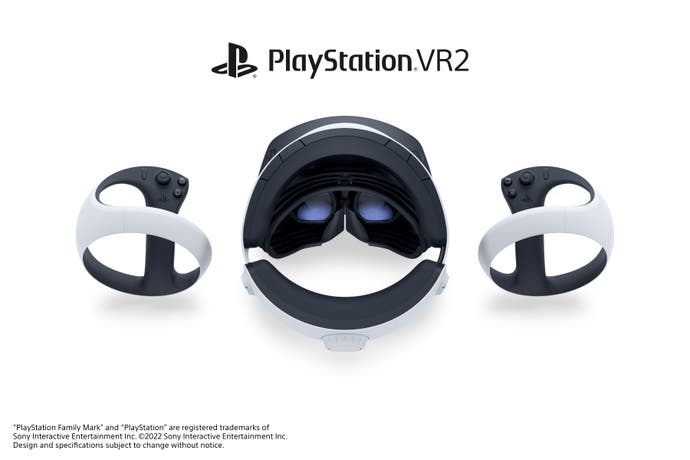
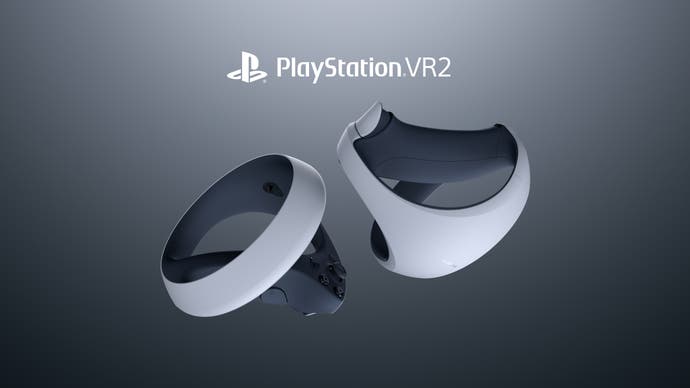
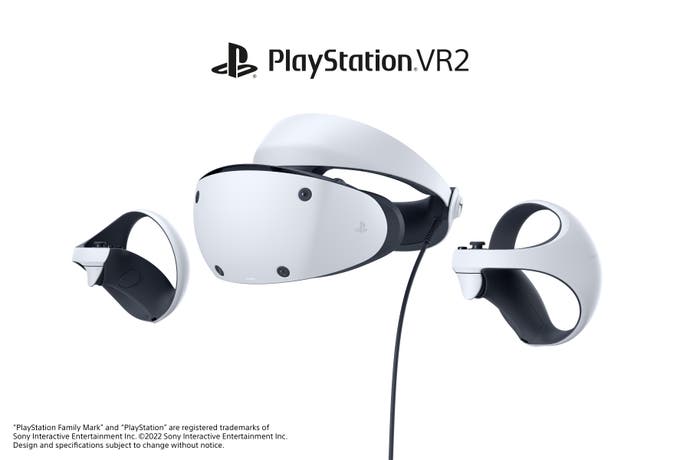
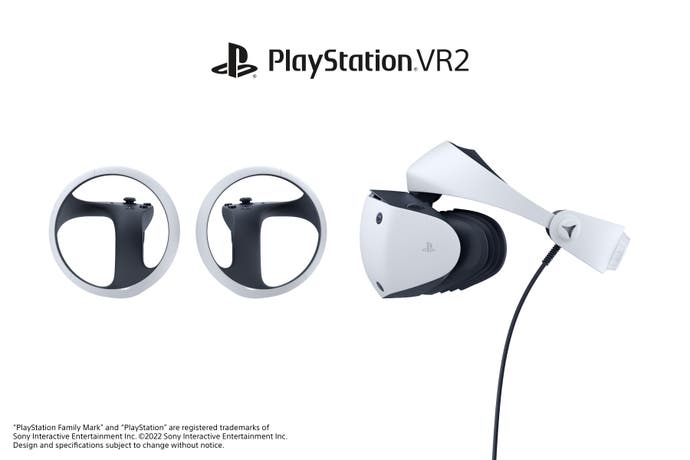
The first time you turn on the PSVR2 headset, you'll be asked to run through a short setup process which allows you to quickly and easily calibrate the headset to your specific room and face shape. It's a super simple process made interesting by some fun little setup screens that help to demonstrate the headset's new features. To adjust the IPD (interpupillary distance - the distance between your pupils) for instance, you simply roll a little wheel on the top of the headset until the digital representations of your eyes on screen end up in the centre of two circles that represent the headset's lenses. It's as easy as that.
To calibrate the headsets' eye tracking, all you then need to do is follow a couple of dots with your eyes as they move around the screen. It's all over in minutes and afterwards you're able to test out the accuracy of the calibration in a cute little screen that shows cartoon versions of your eyes flanked with dots around the edge. Each dot you look at plays its own little musical note, so it's a lot of fun to dance your eyes around and make up some little tunes as you go. A fun element, too, is how the eye tracking here also detects if you blink and the PSVR2 mirrors this with the on screen visuals, so you can wink to yourself to your heart's content. It's just a really nice touch that adds a bit of Astrobot-style charm to the proceedings.

In another swanky new setup feature, the PSVR2s See-through mode gives you a super easy way to set up your play space for room scale VR. See-through mode can be activated at any time by pressing a button on the underside of the visor and it instantly shows you the outside world, albeit in black and white. It's not the perfect picture, but it lets you reach for a coffee cup without the fear of knocking it onto the floor and during the setup process it's used to scan your room for obstacles and free space. It feels very futuristic as you watch your room being scanned in front of your eyes, but it also feels a bit more for show than functionality, as I found it didn't always offer super accurate results. Thankfully you're able to then use your sense controllers to tidy up the play space a bit by redrawing or deleting areas as needed.
There's no such calibration necessary for the Sense Controllers. Unlike the PSVR's Move Controllers that you had to hold up to the PSVR's camera to calibrate, here they are ready to go out of the box. Just press the PS button to pair them once the headset is on and calibrated and you're done. It really is that streamlined.
Comfort-wise, I've put a lot of hours into the PSVR2 now and I can safely say it's probably the most comfortable VR headset I've worn. The halo band around the top of the headset distributes the wait around your skull so the visor isn't pulling down on your face like the Quest 2 does, and the rubber cushions and the easy-to-use headset tightener dial mean you can have it sitting snugly without feeling a huge amount of pressure. Saying that, extended play time did still leave me with some pressure marks on my forehead and the bridge of my nose, although they were nothing like the deep ridges in my skin that I'd get from the Quest. The longest I played non-stop was about five hours and the headset never felt uncomfortable or heavy (or sweaty!) There's also minimal light leakage from the outside thanks to a thin rubber shield that rests against the sides of your face and, in good news for glasses wearers, I also tried the headset whilst wearing a pair and there was plenty of room to wear them comfortably, without intruding on the experience at all.

The controversial PSVR2 to PS5 cable really isn't much of a bother either. Understandably, people have issues with the unit not being wireless but I played seated most of the time and didn't notice the cable once. It's basically weightless, and the length of it means you'll be able to do room scale VR with no issues too. Compared to the Spaghetti Junction of cables from the original PSVR, this cable is absolutely nothing to be worried about.
In terms of the Sense Controllers, these things really are a huge leap forward when coming from the Moves of old. Ergonomically they fit in my hands so well, the button placement is great and the build quality is excellent. They're also really light too, which is great news for something you'll be holding with outstretched arms for long periods of time. The only fault I have with them - and it's quite a big one for me - is that the grip buttons on the side sit way too flush with the handle. This will have been done to minimise accidental button presses, but it also meant I had to squeeze them really hard in order to get them to activate.
This led to me feeling a lot of strain on my index fingers, which also made gripping things like the blasters in Star Wars: Tales from the Galaxy's edge feel rather clumsy. I'd often drop things on the floor without realising due to accidentally loosening my grip without realising, something that ended up getting rather aggravating. Good news for those who are naughty like me, though: you can remove their wrist straps.
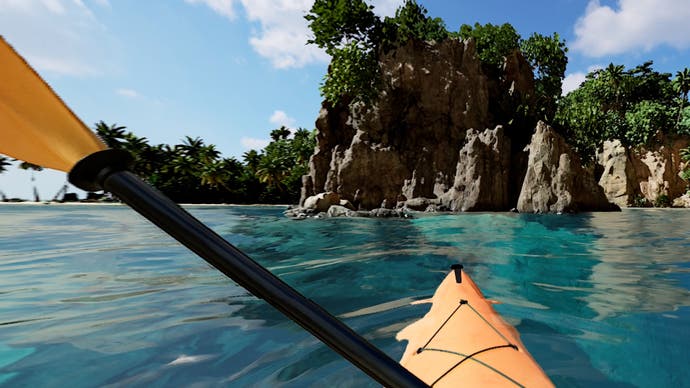
When it comes to battery length in the Sense Controllers, I managed to play Horizon Call of the Mountain for 4.5 hours before my low battery warning came up. That said, it felt like the controller tracking started to take a hit and get less accurate after about 3.5 hours of play - nothing substantial, just a bit of drift once in a while. It's certainly nowhere near as bad as anything you'd have experienced with the Moves, even when they were fully charged.
Also included with the headset are a pair of in-ear stereo headphones that fit nicely into the back of the PSVR2's halo band. The audio from these is surprisingly competent and the way you can store the buds in little triangular holes on the sides of PSVR2 is a neat touch. The best way to experience audio is still with a separate pair of wireless headphones, mind. I tested it out with Sony's Pulse 3D Wireless Headphones and they fit perfectly, and gave me better audio quality overall.
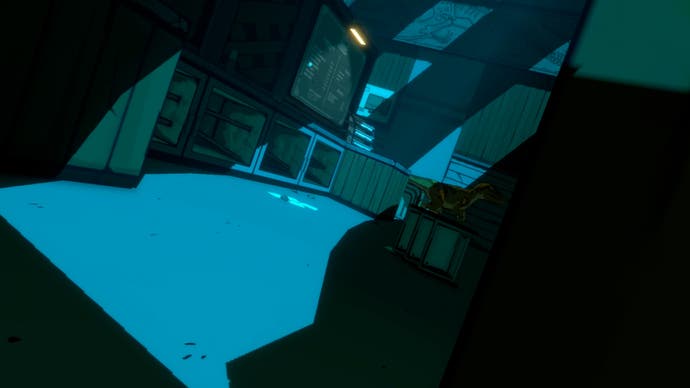
As for the experience of the PSVR2 itself, the leap in visual quality between the original PSVRs 1080p resolution and the PSVR2's 4K HDR OLED display is genuinely jaw-dropping. The fuzzy, muddy visuals from the past are replaced by lush bright colours, deep contrasts and a super sharp image that makes even distant objects look crisp and clear. The views from the tops of the peaks in Horizon Call of the Mountain demonstrate this point perfectly. I can't stress enough how good its visuals look compared to anything the PSVR could manage. If you've never played high-end PC VR before, you're about to get your mind blown by the quality.
That's not to say you can't still see the pixels in the display at times, though they're hardly noticeable like they were in the PSVR. They're most noticeable when looking at lighter images, like the bright blue sky in Horizon, but otherwise I never registered them, especially if the image was full of detail. Where the headset is lacking, though, is with field of view. It's only about 10 degrees more than that of the original PSVR, so you do still get that 'binocular vision' effect where you notice the circles of black at the edge of your vision. Again though, it's something you'll only see really when you're looking for it. Once I was fully immersed in a game, I totally forgot they were there.
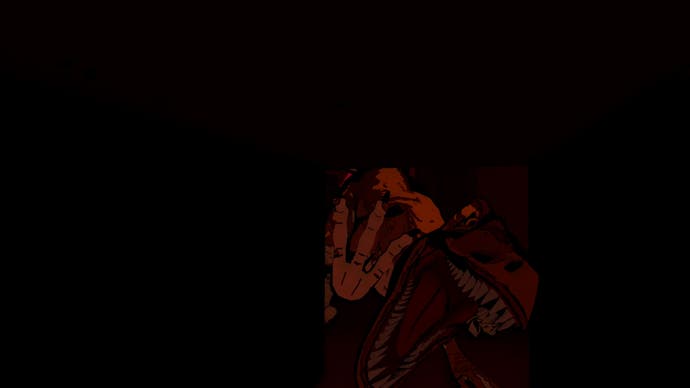
I've mentioned tracking a couple of times already, but once again I have to point out how far the leap between generations is here. With the PSVR you had to rely on a mounted camera and some coloured lights for the tracking of both your headset and your controllers, which led to huge inaccuracies and frustrations. Thanks to the PSVR2's inside-out tracking that uses four headset mounted cameras, along with motion sensors and proximity sensors, fumbling with on-screen items and awkward controller drifts when you stretch your arms out too far are a thing of the past. It's not perfect: I did lose tracking of one of my controllers for a second when I moved it underneath the arm of the chair I was sitting on, and sometimes if you reach down too low it feels like the headset struggles to track your hands slightly, but other than that it was spot on. Reaching behind my head to pull arrows from my shoulder worked well, and best of all I could play games facing in any direction I wanted because I no longer had to worry about facing a camera.
Also new to the PSVR2 are the headset haptics, which do add a bit of extra immersion to the experience without being anything particularly magical. Like the DuelSense controller's haptics it varies from game to game. Jurassic World Aftermath for instance shakes your face off when a T-Rex walks past, while others like Horizon use them more subtly. The first few times it happens it's fun, but after a while you begin to forget it's there. The Sense Controllers have haptics too and it's a similar situation. I was actually more impressed with the adaptive triggers which, just like in the DualSense controllers, can be used to replicate things like trigger pulls and engine revs. They felt especially great in After the Fall, making the guns I was holding feel particularly real, but once again it differs between games. Either way, after not having them on the Move Controllers, their addition here is once again a huge step up for immersion.
The final big new addition for PSVR2 is of course the eye tracking, which uses an IR camera to accurately track your eyes inside the headset. This adds a range of new features, such as foveated rendering, which allows the games to render the areas you're looking directly at in higher detail than those you're not. It also gives developers the option to incorporate eye tracking directly into their games, which I was able to test in the menus of Horizon Call of the Mountain. Using just the power of my eyes and my thumb on the X button, I was able to select the menu option I wanted by simply looking at it and pressing X. It worked fine, and was a bit of a novelty considering a press of the thumbstick would be almost just as fast, but I like the idea of the potential it may bring for speedy weapon swaps or other new ideas in future games. (One example: in the upcoming Switchback VR, Supermassive's Dark Pictures sequel to Rush of Blood, there's a section where monsters only move when you blink in real life, which sounds utterly terrifying to me!)
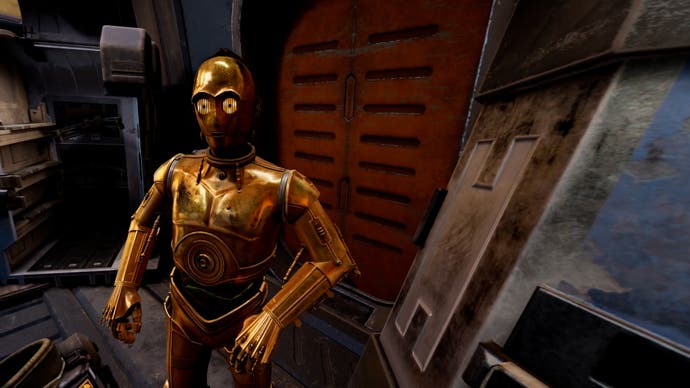
Just like with the original PSVR, there's also the ability to watch movies or play flat screen games on the headset - but there isn't really a dedicated "theatre mode" as such. You can just watch movies or play flat games on a big virtual screen on a plain black background. I tested this out in the most intense way possible by watching the opening of All Quiet on the Western Front on Netflix and then playing a bit of Dark Souls 2, and both worked just as well as they would have done in the PSVR, except the images were of course a higher resolution than before, and crucially without any of the screen drift I noticed with the first headset.
Finally, and probably most importantly: is the PSVR2 worth Sony's astronomically high asking price, especially in these tough times? That will always depend on your circumstance, but those who've already toyed with the medium, and who have the spare cash, will be absolutely thrilled - even more so if you're coming straight from an original PSVR. This headset elevates the immersiveness and quality of VR experiences on the PlayStation massively and using the PSVR2 after previously owning a PSVR feels like a true generational leap, right up there with playing Mario 64 for the first time.
There are plenty of launch games to play with too, and some of them, like Horizon Call of the Mountain, look absolutely spectacular. I've high hopes for Gran Turismo 7 and No Man's Sky in PSVR2, but haven't been able to play either yet. And while there are a number of games to play, there really does seem to be a lack of big, standout launch titles that you could describe as a system seller. No Astrobot, no Half-Life: Al. Hell, there isn't even a PlayStation Worlds style demo disc included in this one. Which is a shame, because I'm in love with the hardware itself.
Games tested at time of writing review:
Horizon Call of the Mountain - A spectacular introduction to the PS VR2, somewhat let down by its over reliance on climbing gameplay over all else. Read my full Horizon Call of the Mountain review here.
Jurassic World Aftermath Collection - Starts off painfully slowly before becoming something akin to an Alien Isolation-lite. The headset haptics are thrown into overdrive with this one and in an early section where a T-Rex stalks you, its footsteps are so heavy it literally makes your skull vibrate. I was initially super bored with this one as there's not much interactivity but it ended up being rather scary, despite the cel-shaded art style.
Moss - I've played this game on multiple platforms now, but this is by far the best it has ever looked. The storybook world that you and your mousey-pal Quill inhabit looks freaking gorgeous through the PSVR2. The colours are sharp, the detail crisp - even from a distance, and leaning into the world and interacting with the scenery is way easier now thanks to the Sense Controllers which track much better than the DualShock 4's lightbar from the original PSVR version.
WHAT THE BAT? - Due to lack of space in my VR Corner I've been unable to test this one out, which is a shame as it looks really fun. Unless you're able to draw a playspace of 2m x 2m in your home, don't bother with this WHAT THE BAT? as I can barely manage 1m x 1m in my room and because of this the game wouldn't even start.
Kayak VR: Mirage - Probably one of the most realistic-looking VR games I've ever played. There was a bit where I was paddling around the arctic and something that looked a bit like an Orca swam underneath me and I was so in awe, I forgot it wasn't real life. I literally felt a bit of primal fear in my chest seeing it slide through the water below my kayak. There's not a huge amount to do past paddling and sightseeing but in the first few hours of play it'll take your breath away on countless occasions. The 'Tour' mode is both a perfect introduction to VR for newcomers and a perfect way to see just how incredible the PSVR2's visuals can be.
Demeo - I've previously played this tabletop-themed survival role-playing game on the Rift S and the visuals on the PSVR2 were a definite improvement on that. I was only able to test this game out in single player so far and, just like the PC version, it is double-hard, so I didn't get very far. It's a lot of fun with friends though and the control scheme that employs physical motions to move yourself around works well with the Sense Controllers, even though I'd have preferred some kind of stick movement.
Star Wars: Tales from the Galaxy's Edge - Enhanced Edition - Despite being rather basic in terms of gameplay, especially when it comes to enemy AI and puzzles, Star Wars: Tales from the Galaxy's Edge - Enhanced Edition does really well to capture that Star Wars vibe and it's a lot of fun shooting blasters at cut and paste enemies, even though their AI is about as intelligent as Bantha poodoo. Thanks to remastered 4K HDR visuals, some of the views in this game look proper stunning, but even then, you can still tell it used to be a Quest game due to its simplicity.
Cities VR: Enhanced Edition - City builders really aren't my idea of fun, and Cities VR: Enhanced Edition did little to change my mind. The graphics really aren't up to much and I honestly didn't notice any haptics happening. I'm sure this game will appeal to a bunch of people, but it's lacking the 'wow' factor that most of the other PSVR2 upgrades have.
After the Fall - I've only been able to play After the Fall in singleplayer with bots as teammates so far, but it feels pretty much identical to the PSVR version, just with a bit of a graphical update and some snazzy adaptive trigger stuff that works really well to mimic the feel of a trigger pull. It's fast paced, hectic and still a bit janky here and there, but it should be a lot of fun to play with pals - especially now the controls are way more accurate.
Startenders VR - Rather than being a fun, wacky, workplace romp like Job Simulator which this clearly emulates, Startenders VR felt more like doing an actual job. By which I mean, boring and a bit of a chore to play. It didn't really make much of the new headset features either, although the more accurate tracking will definitely come in useful when fulfilling all the drink orders.

